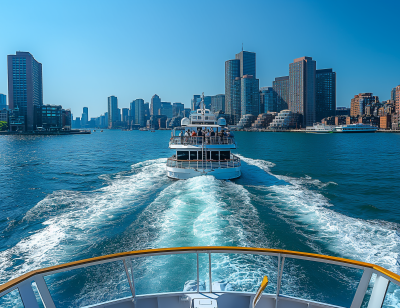With the enjoyment of nature comes the inevitability of encountering its less-than-friendly critters. That’s why being in the know can spell the difference between delight and disaster when planning a trip to Australia.
Planning a trip to Australia comes with its share of valid fears, given the country’s reputation for hosting the ‘highest number of animals that can kill you’ (next to Brazil, that is).
However, don’t let this fact deter you from including Australia on your travel bucket list. After all, millions of travelers from all over still visit its vast lands every year for a myriad of reasons. Thanks to its unique natural landscape, romantic coasts, and boundless opportunities for adventure, the Land Down Under is simply hard to resist (like chicken to a crocodile)!
But if you’re still straddling the fence, allow us to buy you some peace of mind with these essential tips.
Understanding Australia’s Climate
Australia’s vast landscape features a climate spectrum—from the tropical humidity of Queensland in the north to the milder, temperate conditions of Victoria and Western Australia in the south. Each region offers distinct seasonal changes, impacting the best times for travel.
Best Times to Visit
Planning a trip to Australia seems simple enough, but one does have to consider where they would want to go, and when they should:
- Queensland: From May to October, the dry season brings optimal conditions for exploring marine wonders and lush rainforests.
- Victoria: The shoulder seasons of spring and autumn are perfect for enjoying Melbourne’s bustling urban life and scenic wine regions with mild temperatures.
- Western Australia: The cooler months from April to October are prime for experiencing Perth’s sunny charm or exploring the dramatic landscapes of the Kimberley.
Wildlife Safety Tips
Now we come to the fun part. Australia hosts an array of fascinating wildlife, including kangaroos, koalas, and less cuddly creatures like spiders and venomous snakes. It goes without saying that understanding these creatures’ behaviors and habitats is crucial for safe interactions.
First, always respect Australia’s biodiversity by sticking to designated trails in national parks and other protected areas. Planning a trip to Australia requires you to focus on nature conservation that benefits both your safety and the protection of the country’s delicate ecosystems.
Always observe wildlife from a distance. While you’re at it, avoid feeding them, and do not make sudden movements if you encounter potentially dangerous animals (like those that can easily outmuscle or outrun you). In other words, don’t be a shoo-in for a Darwin Award by poking the bear—literally.
Instead, educate yourself on the immediate steps to take if bitten or stung, including seeking medical help without delay. Staying calm is actually easier said than done. But it can surely spell the difference between a thrilling story to tell your grandkids or a horrific injury you’ll regret for life.
Essential Health & Safety Gear
Your weather and wildlife safety knowledge is always best paired with the tangible.
- APPROPRIATE CLOTHING: Pack lightweight, breathable fabrics and sturdy hiking boots to accommodate the diverse climates and terrains you may encounter in Australia.
- SUN PROTECTION: The Australian sun can be pretty intense. Apply broad-spectrum sunscreen regularly, wear protective clothing, and don a hat to shield yourself from harmful UV rays.
- HYDRATION: Dehydration can strike like a viper quickly, especially in arid regions or during the summer. Carry water with you at all times and drink regularly, even if you do not feel thirsty.
- VACCINATIONS AND FIRST AID: Consult with a healthcare provider about recommended vaccinations for your trip. Also, pack a well-stocked first aid kit to treat any potential wildlife or insect bites and other potential injuries. Items like snake bite kits and insect repellent can go a long way especially if you’re planning a trip to Australia that involves a lot of outdoor exploration.
- EMERGENCY CONTACTS & APPS: Familiarize yourself with local emergency contact numbers like 000 (911’s counterpart in the country). You can also download relevant apps for weather updates and emergency services to ensure you can access help if needed.
Experience the Ease of Planning a Trip to Australia with ThisCityKnows
Planning a trip to Australia with thorough preparation for the climate and wildlife not only secures a safer experience but also deepens your engagement with this extraordinary country. . After equipping yourself with the right knowledge and gear, you can happily leave the rest to spontaneity.
For trips that are well-rounded, unplanned, or somewhere in between, let ThisCityKnows be your planning partner. Our travel resources span the globe, tailored to everyone from the most meticulous jet-setter to spur-of-the-moment globetrotter.











